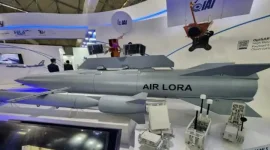- Views: 7K
- Replies: 19
The Indian Navy is charting an ambitious course for its future, focused on expanding and modernizing its aircraft carrier fleet to secure maritime dominance in the Indian Ocean Region (IOR).
This strategic initiative envisions India operating three to four aircraft carriers by 2040, reflecting the country's growing economic strength and its commitment to strengthening its defence capabilities in the face of increasing maritime challenges from China and Pakistan.
India's current naval strategy centers on operating three aircraft carriers by 2040. INS Vikramaditya and INS Vikrant are already operational, while the third, INS Vishal, is under development. As India's economy grows and its defence budget expands, the Navy may further increase its fleet to four carriers.
This would provide greater operational flexibility and ensure continuous air operations, with at least one carrier always deployed in critical areas like the IOR, even during maintenance or training cycles.
This growing carrier fleet will be complemented by a substantial increase in carrier-based aircraft. The Navy plans to operate 26 Rafale M fighter jets and 145 TEDBFs (Twin Engine Deck Based Fighters) by 2040, significantly enhancing its offensive and defensive capabilities.
The Rafale M, with its advanced technology, including AESA radar, electronic warfare systems, and long-range weaponry, will provide a formidable air defence umbrella and strike capability.
The TEDBF, a 5th-generation aircraft designed specifically for India's carrier operations, will integrate advanced stealth and AI-assisted capabilities. Its low maintenance cost and operational flexibility will make it a valuable asset.
Together, these aircraft will total 171 by 2040, representing a significant concentration of airpower aboard Indian aircraft carriers. This will provide a critical edge in potential conflicts, particularly with Pakistan, whose air force currently operates around 450 combat jets.
Furthermore, India's naval airpower will act as a force multiplier for the Indian Air Force (IAF). In times of conflict, carrier-based aircraft will work in tandem with the IAF, providing additional coverage, firepower, and strategic reach. This synergy will enhance India's overall air combat capability, creating a strong deterrent against adversaries.
India's expanding carrier fleet also serves as a counter to China's growing naval presence in the Indian Ocean. The People's Liberation Army Navy (PLAN) is rapidly expanding its carrier fleet, aiming for a permanent presence in the region to secure its trade routes and supply chains.
As India expands its own carrier fleet, the rivalry in the Indian Ocean will intensify. India's aircraft carriers, with their advanced fighter jets, will not only defend the nation's interests but also help to counter China's ambitions and assert India's dominance in the region.
In conclusion, India's ambitious plan to expand its aircraft carrier fleet and enhance its naval airpower reflects its commitment to becoming a major maritime power. This initiative will significantly bolster India's defence capabilities, counter the growing naval presence of China in the IOR, and ensure the protection of its strategic interests.


